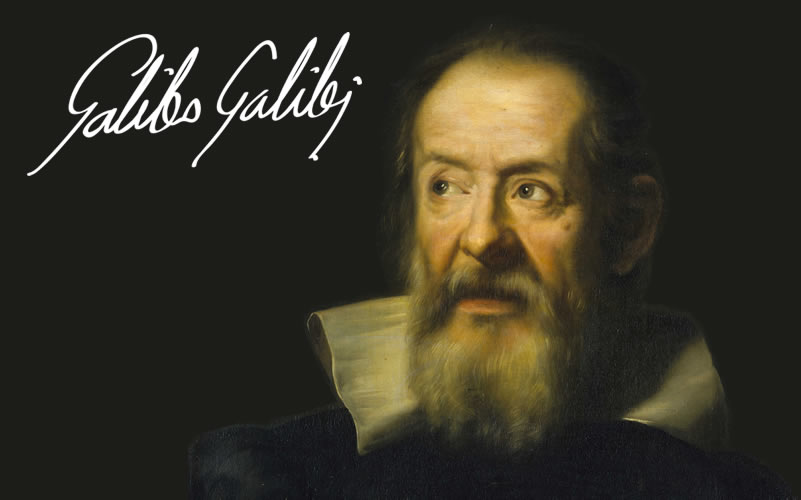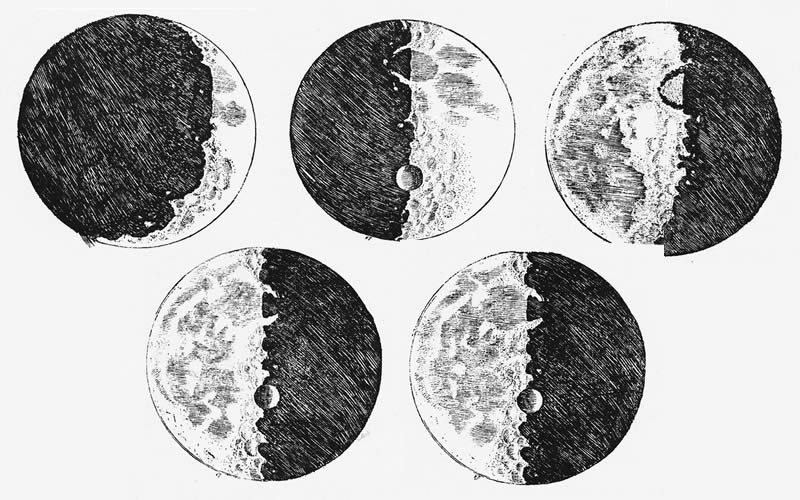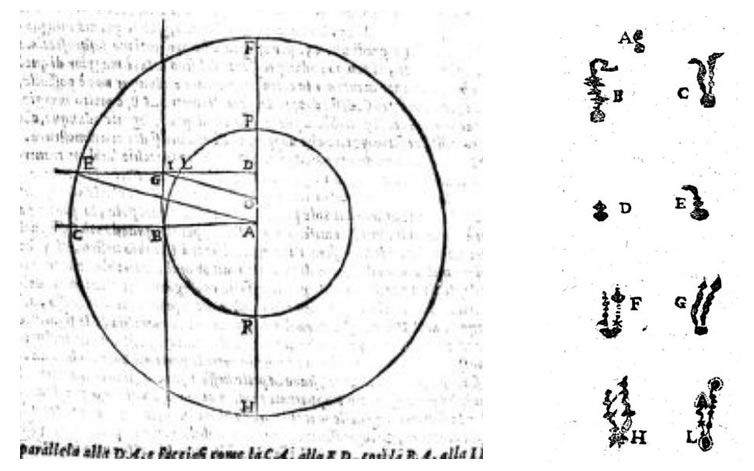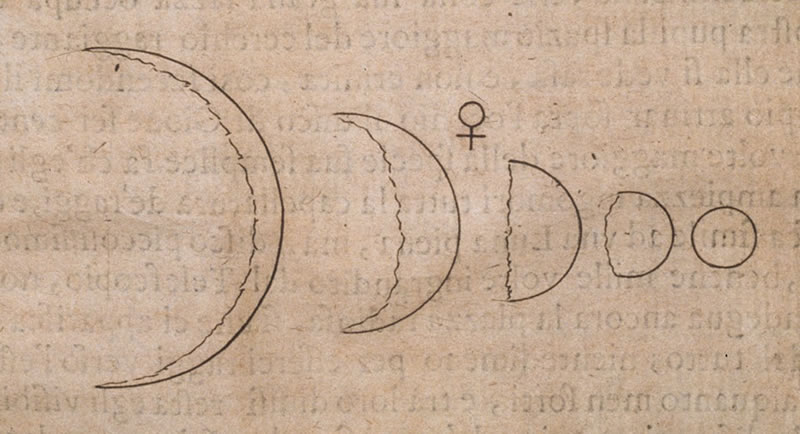Galileo Galilei
11.24 - Understand the importance of Galileo's early telescopic observations in establishing a heliocentric (Sun-centred) model of the Solar SystemGalileo is considered to be the first scientist to make thorough observations of the sky with the newly invented telescope from Holland.
Galileo was already an accomplished mathematician, having already conducted experiments involving buoyancy, temperature and the speed of falling objects.
His first major discovery was that Jupiter possessed four large satellites which were later called the Galilean Moons.
He also found that the Moon had an uneven and rugged surface of craters and mountains.
Venus was seen to show phases like the Moon and Galileo carefully observed Sunspots on the surface of the star that was thought to be perfect at the time. With the new telescope the Milky Way was observed to consist of countless stars rather than the misty band you can see with the naked eye.
Galileo was not able to form a theory regarding Saturn. He observed it had two large moons resembling ears that seemed to shrink and expand over time. Other astronomers realised they were rings with more powerful telescopes. Galileo’s notebooks show he may noted Neptune but did not think it any different from another star or comet.
Galileo is a fascinating scientist to find out more about. He spent time in prison and house arrest because he published his views about the heliocentric theory after being banned from doing so by the Inquisition.
Questions
- Name some of the principal astronomical discoveries associated with Galileo.
- Why was the discovery of Jupiter's moons so important for astronomers at the time?
Summary
Best known for observations with a telescope
- Moon: Uneven surface
- Venus: Phases like Moon
- Sun: Sunspots
- Jupiter: 4 Moons
See Also
Links
- The Galileo Project Biography of Galileo
- Stanford Solar Centre Galileo's Discoveries










 | © All Rights Reserved |
| © All Rights Reserved |